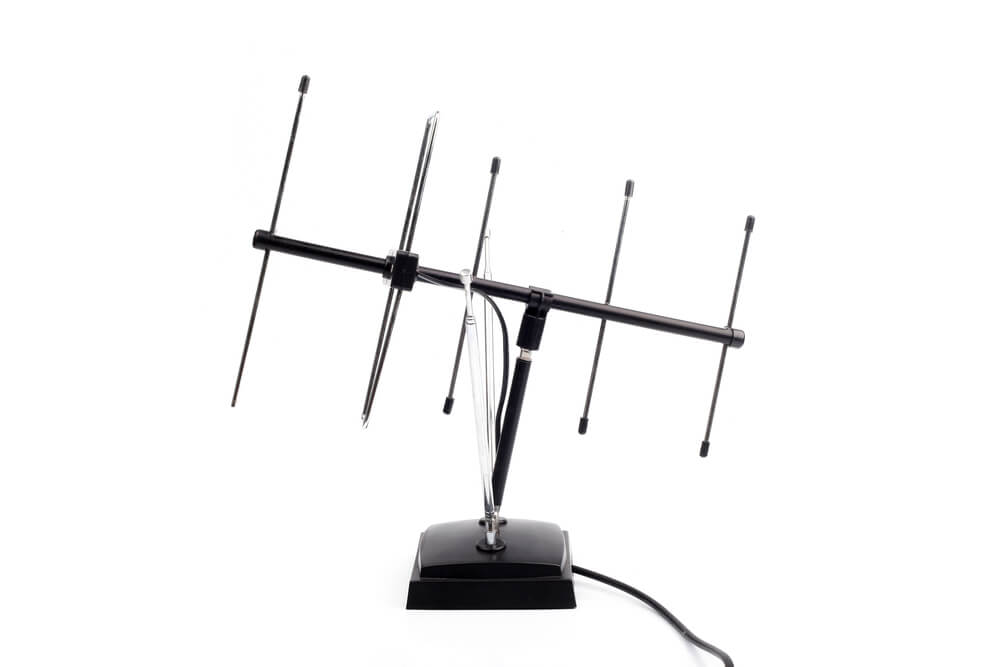Imagine being able to watch TV for free, without any monthly fees. And this is possible with indoor TV antennas! These antennas offer a simple and affordable way to access local channels over-the-air.
Indoor TV antennas have come a long way in terms of technology and design. While there are numerous options available in the market, not all of them deliver the promised results. However, there are indeed the best indoor aerial for digital TV Australia that works and can provide you with excellent reception for your favourite TV channels.
Do Indoor TV Antennas Work?
Many people wonder if indoor TV antennas work. With the increasing popularity of digital TVs in Australia and beyond, there’s uncertainty about how well indoor antennas can perform.
The truth is, indoor TV antennas can work, but their effectiveness depends on several factors. One major limitation is their size and strength, which are generally smaller compared to outdoor antennas. This can result in weaker signals, especially for digital TVs, which require strong, clear signals for better image quality.
In the past, indoor TV antennas were more suitable for analogue TVs. However, with the widespread use of digital TVs today, indoor antennas may not provide the best performance.
While indoor TV antennas can work, they may not always deliver the same level of performance as outdoor antennas because their efficiency can be affected by factors like antenna design, signal strength, and interference.
Indoor antennas work best in the following situations:
- In areas with strong or very strong signals.
- If the main TV transmitter for your area is nearby, you’re likely to get good reception.
- Upstairs bedrooms are generally better locations than downstairs living rooms due to the added height.
- If the transmitter is on the same side of the house where you’re installing the antenna, there will be less interference from your property blocking the signal.
Types of Indoor TV Antennas
Indoor digital TV antennas come in different types, each with its own benefits:
Flat Antennas: These are thin and can be stuck on walls or windows. They’re good if you want something low-key, but they might not work well if there are lots of walls or buildings around.
Amplified Antennas: These antennas have a boost button to make the signal stronger. They’re handy if you live far from TV towers, but sometimes they make the picture fuzzy.
Multi-directional Antennas: These antennas can pick up signals from all directions. They’re great for busy areas with lots of buildings because they can find signals coming from different places.
Loop Antennas: These are small and round and can sit on a table or stick on a wall. They work well in places with good signals.
Rabbit Ears Antennas: These antennas have two long sticks you can move around. They’re good for adjusting to get a better signal, but they might not be so great in areas with weak signals or lots of interference.
Each type of indoor TV antenna has its pros and cons, so it’s important to think about where you live and what you need before choosing one.
Choosing the best Indoor TV antenna Australia
To get the most out of your best indoor TV antenna, consider a few key things before buying.
- Look for an antenna that can pick up signals from nearby stations easily.
- Make sure it’s simple to set up and won’t require a lot of fuss.
- Some antennas come with a boost option to make weak signals stronger, which can be helpful depending on where you live.
- Lastly, think about your budget and find an antenna that fits your needs without breaking the bank.
- Taking these factors into account will help you choose an indoor TV antenna that works well for you.
- While there are many indoor TV antennas on the market, some stand out for their performance and reliability.
- Amplified antennas like Mohu Leaf Supreme Pro, Antennas Direct ClearStream Flex, and Antop HD Smart Bar AT-500SBS, Mohu Arc Pro etc. have received positive reviews for their ability to deliver excellent reception and reliability.
How to Position Your Indoor Antenna for Better Reception
- Consider Terrain and Surroundings: Factors like terrain and nearby buildings can affect reception, so be mindful of these when positioning your antenna.
- Orient the Antenna Correctly: Use tools like AntennaWeb to find the direction of the stations you want to tune and orient your antenna accordingly.
- Mount the Antenna in a Window: If possible, mount your antenna in a window as this can improve reception. If not, try to place it as high up as you can.
- Use a Longer Cable if Needed: Antennas come with a short coaxial cable, so consider replacing it with a longer one for more flexibility in positioning.
- Run Auto-Channel Scan: Use your TV’s setup menu to run an auto-channel scan. This will help you find the best position for your antenna by showing the number of channels received.
- Reposition the Antenna if Necessary: If you don’t get a full list of channels, try repositioning the antenna and running the auto-channel scan again. It may take a few tries to find the best position.
If your indoor TV antenna isn’t working well, you can try a few things to make it better. You can use a signal booster and check the cables to get a stronger signal and clearer picture.
If you’re still not getting enough channels, you may want to consider installing an outdoor antenna for stronger reception or consult Indoor antenna installation experts for the best indoor digital TV antenna Australia.
Conclusion
Internal TV antennas may not match the performance of external ones, but they can be a convenient solution in certain situations. Setting up an indoor antenna is not only easy but cost-effective, making it an attractive option for many.
However, to get the best reception, it’s important to experiment with positioning and consider factors like signal range and interference. By following these tips, you can optimize your digital indoor TV antenna for better reception and enjoy your favourite shows with clarity.
Read More








